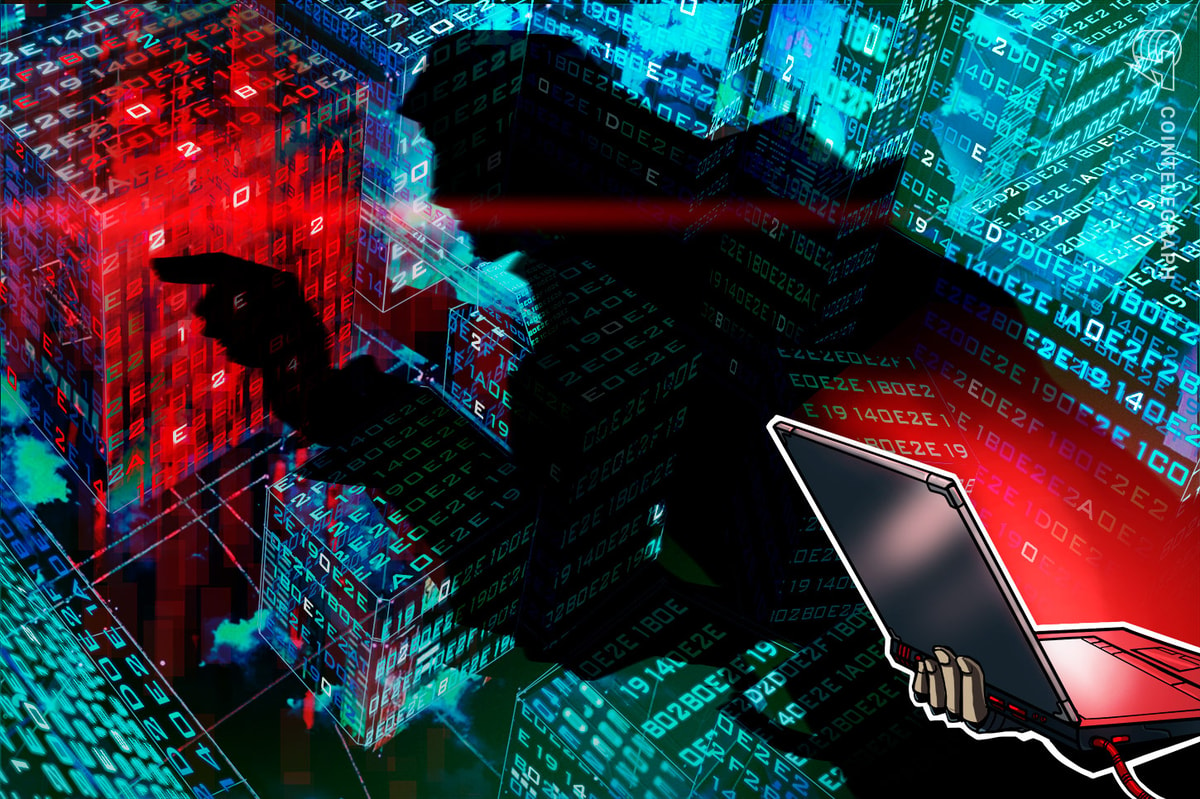The excitement around the applicability of blockchain in the public sector is building at a large scale. Government agencies have started testing blockchain technology’s potential to improve the public sector. However, the technology’s application in the public sector remains in the experimental stages.
Blockchain-based solutions could shift governments away from siloed and inherently insecure centralized systems. Public blockchains may transform the foundations upon which every government sector operates.
Blockchain technology could accelerate key government functions. Such functions entail identity verification and certifying transactions such for land-use registry and safekeeping of medical records.
Having realized the technology’s potential, governments worldwide are exploring ways to integrate blockchains into government functions.
This article discusses the benefits of applying blockchain in the government. But, before answering the question “What are the benefits of blockchain to society?” it’s best to examine the underpinnings of this novel technology first.
What is a blockchain?
A blockchain is a decentralized network comprising data records or “blocks” that cannot be modified by a single actor. In the blockchain network, each block in the chain contains many transaction records. When new transactions are added to the blockchain, those transactions are recorded automatically once the block as a whole is verified and added to the chain.
The recorded transactions are then distributed to every participant’s ledger. That’s why if someone were to change one block in a chain, it would become immediately obvious that the system was compromised.
It’s highly infeasible for malicious parties to corrupt a blockchain network. In theory, feasible attacks such as the 51% attack can be carried out, where a majority of the network is owned and commanded by malicious actors.
Running such an attack operation would become increasingly costly very quickly, however, since the cost would increase with every block that is added. Because the malicious actors would own the majority of the network, attacking it would mean acting against its own interests.
Why should governments use blockchain technology?
States can gain many advantages from using blockchain technology in their governmental infrastructure. One fundamental role of governments is to store and manage sensitive information. States store details about their citizens, assets, organizations and activities.
Storing sensitive public data while maintaining data privacy can be complex and cost-intensive. Even first-world governments routinely fail to prevent data leaks.
Centralized government systems are inefficient and inherently costly and insecure. Governments everywhere have been actively seeking novel technologies to offer improved public services that are also cost effective.
A government relying on blockchain technology could simplify the management of trusted information. The state can do so while protecting against unauthorized access and data manipulation.
A blockchain-based system has several attributes that may be of great use in government. Several reasons why governments should use blockchain technology are outlined below.
Blockchain prevents government corruption
Blockchain has the potential to eliminate intermediaries in many e-government services. In this regard, it serves a unique role in combating government corruption.
This technology provides a remarkable combination of tamper-proof record keeping. Blockchains can allow states to adopt a decentralized approach where appropriate. Such approaches foster real-time transparency, auditability and smart-contract functionality.
Smart contracts are the backbone of decentralized finance (DeFi), because they are algorithms that execute automatically once certain preset conditions are met. Blockchain technology also provides easier access to public information. Public information shared via the blockchain adheres to four fundamental principles. The information is open to anyone by default, readily accessible, comprehensible and interoperable.
Incorporating blockchain technology into the public sector can improve efficiency and citizen engagement. The technology also streamlines the management of public affairs.
Blockchains enable secure identity management, or e-identity
Cybercrimes and data breaches have become a frequent occurrence in various industries. Governments face serious challenges when safeguarding sensitive data and protecting their citizens’ identities.
A blockchain is an ideal approach to resolving identity and access management (IAM). In IAM, a distributed ledger allows everyone in the network to verify credentials. Participants can do so without compromising the actual data.
Distributed ledger technology (DLT) allows states to register each person’s identity so that they may easily safeguard against any breaches. DLT also enables shared record keeping. The network records and verifies identities instead of relying on a central authority.
Blockchains reduce costs and improve efficiency
Government agencies must deliver public services while managing scarce resources. Blockchain technology can help state actors with budgeting and financial management.
Consensus algorithms can be used to track and reconcile government transactions. Consensus makes it possible to reduce costs and increase efficiency.
A blockchain-based accounting system provides faster, more permanent and auditable reconciliation. Blockchains streamline processes and reduce redundancy. They also help audit financially weak areas, all the while maintaining data integrity.
Blockchains promote transparency in grant disbursements
Many governments disburse millions of dollars every year to support various causes. Key among them are humanitarian aid, social assistance, education, arts and others. In most cases, the grant disbursements process is opaque, convoluted and inefficient. In the process, economic rents are high with much of the funds finding their way to third parties and banking fees.
Blockchains also have the potential to mitigate corruption and build public trust. The technology reduces the number of actors involved in grant disbursements and management as well.
The result is a streamlined process that reduces costs dramatically. Blockchains may even be able to eliminate any opportunity for illicit financial siphoning.
Blockchains can be used for electronic voting, or e-voting
Election security is a growing concern for many populations around the world. Many issues are commonplace surrounding voter registration integrity, voter turnout and poll accessibility.
Blockchain-based voting solutions could improve these essential democratic processes. The blockchain network is decentralized, transparent, encrypted and immutable. These attributes could help eliminate election tampering while maximizing poll accessibility.
Because elections are crucial, a blockchain-based e-voting approach could help reduce voter manipulation and sustain electoral integrity.
How can blockchain be used in government?
E-government solutions based on automated decision making on a nationwide scale can bring trust, simplicity and efficiency. So, how can blockchain technology be used in government? The government can use DLT to support an array of public sector applications, outlined below.

Using blockchain technology for land registration
The real estate industry has low levels of transparency. The investor industry has multiple dislocated parties relying on manual processing. The high barrier to entry for investors has resulted in fewer investors and expensive underlying assets.
The state land registry department can apply blockchain technology for various purposes. These purposes entail managing the owner registry, transactions and administration of said registry.
Blockchain technology provides everyone with an exact copy of the ledger between all parties. A blockchain-based land registry system may be used to generate a digital token representing property ownership.
The technology adds value to the land registry sector by removing multiple layers of cost and friction. Blockchains can also reduce the time spent on verification and grant-increased flexibility for modular products.
Blockchains can also broaden access to those seeking to buy a fraction of a property. Furthermore, they provide proof of the origin of a traded fractional property. In general, using a blockchain for land registration improves speed, simplicity and transparency. The data is also accurate, up to date and accessible by any party.
Blockchain technology in government healthcare
In many developed countries, a considerable percentage of the gross domestic product (GDP) is directed to healthcare. However, healthcare costs continue to rise and health data breaches are projected to increase as well.
DLT can revolutionize healthcare by eliminating data breaches in doctor-patient confidentiality. Blockchain in healthcare can be applied in five main areas. These areas are personal health record data management, point-of-care genomics management, electronic medical records (EMR) data management, healthcare data protection and management and electronic health records data management.
With DLT, states can manage medical supplies and deploy personnel more effectively to deal with viral outbreaks. On the other side, this approach also empowers patients to own their own data directly.
Blockchain technology in government e-voting
Voting remains an area that draws considerable negative attention due to corruption. Incidents of gerrymandering, manipulated ballot boxes and voters disappearing from registries are common. Even when everything is done by the book, voters are still required to leave their homes and deliver paper ballots to a local authority.
Not only is this voting system outdated, but it’s also vulnerable due to major security vulnerabilities. So, why not migrate this process to a blockchain?
DLT could be used to create a more secure and convenient digital voting system. The network comprises peers and nodes. Nodes verify, process and record all transactions across the system.
Blockchain technology isn’t limited to financial transactions. Rather, blockchains can be used to manage any type of data. In e-voting, citizens cast their ballots using e-voting machines. These machines record data on the blockchain.
Thanks to encryption and decentralization, the distributed ledger is incorruptible, pseudonymized and verifiable. No single party can take down or influence the network because it doesn’t exist in a single centralized location.
A blockchain-based voting system is superior even to mail-in ballots. Because the network is highly secure, it prevents voter fraud in elections. Compared to traditional vote counts, which can take days, blockchains can produce results in minutes — or even seconds — with zero margins for error.
Blockchain technology in government for e-identities
Citizen identity is an integral part of a functioning society and economy. However, traditional identity systems are not secure, vulnerable to hacks and fragmented. Physical forms of identification also present their own set of problems. These issues range from inaccessibility to data insecurity and outright identity fraud.
Blockchain technology’s decentralized identity (DID) approach could eliminate these issues. The technology lets users create and manage their own digital identities.
A key element of DIDs is cryptography. In cryptography, a pseudonymous identifier for a user is secured with a private key. Only the owner of the private key has control over their identity, whereas the public key can be shared openly.
This cryptographic primitive offers two benefits. First, the pairing achieves authentication via a hash function. With this approach, the public key confirms that the owner of the private key sent the message without ever having to reveal the private key.
Second, this primitive ensures encryption. Thus, only the owner of the paired private key can decrypt the content of the message encrypted with the public key. Digital identities store verified credentials without having to reveal sensitive information.
Digital identities negate the notion of relying on a single profile provider. In turn, this approach eliminates the need for excessive documentation.
Blockchain in government: Various applications
Blockchain technology has evolved considerably and is no longer limited to digital currencies. Today, many real-world blockchain government use cases have emerged.
In 2018, roughly 18 states introduced some form of decentralized legislation system. This led to the signing of roughly nine bills into law based on a report from the National Conference of State Legislatures. Other examples of blockchain implementation in governments around the world are discussed below.
The Chinese digital yuan
The Beijing government has pursued and established a digital yuan. The goal is to phase out much of the paper cash in circulation. China is considered to be the most advanced nation when it comes to cashless payments.
Improved document control in Estonia
Estonia has one of the most technologically friendly governments worldwide. The country began experimenting with blockchain technology in 2008. Estonia has also launched the e-Estonia project. The project stores sensitive documents on a distributed ledger. Doing so has led to all government services becoming integrated, ensuring a smoother experience for all citizens.
Smart contracts in the Isle of Man
In the Isle of Man, the government uses smart contracts for the state lottery. Once the lottery ticket is purchased, the money is deducted automatically and randomized numbers are issued. Lucky buyers who hit the jackpot receive instant and automated payouts. The technology has also shortened the time to establish routine contracts and financial arrangements.
E-voting systems in Denmark
In Denmark, the Liberal Alliance party uses a blockchain-based e-voting system. The system provides a secure and verifiable platform for holding national elections. All citizens enjoy easier access to voting, which in turn promotes public welfare.
Digital currency in Venezuela
Venezuela is the first federal government to introduce a digital currency: the petro. The currency had been in freefall due to hyperinflation and United States-imposed economic sanctions. The petro has since alleviated the country’s economic woes. Many Venezuelans are relying on cryptocurrencies to hedge against fiat inflation.
Limitations of blockchain in the public sector
Traceability, efficiency and security are attractive features for a public-sector blockchain. Despite the positive news surrounding blockchain applicability in the public sector, questions remain.
This is because blockchain technology is not a panacea that will solve a government’s every woe. Below, the limitations of blockchain technology in the public sector are covered.
Immutability
As an append-only ledger, blockchains have immense potential to disrupt any area in the public sector that requires trust. The technology could improve transparency, accountability and citizen participation.
In a decentralized blockchain network, however, the data cannot be deleted once it has been added. DLT provides the ability to manipulate the degree of centralization. DLT can be used to separate public and private information. Therefore, DLT should be used to enable, for instance, the deletion of sensitive information.
Disruptiveness
Disruptive technologies like the blockchain are more complex to implement. Trying to secure buy-in for blockchain technology with public officials may be challenging.
Most people associate blockchains with Bitcoin (BTC). Decoupling the idea of blockchains from digital currencies is challenging, as well as explaining how the technology can be used to promote effective governance.
Scalability
Blockchain is still an emerging technology. The challenges of energy consumption and scalability prevent its widespread use. The use of blockchains in the public sector is limited in scope, and the scalability issue remains an open question.
Coding vulnerabilities
Blockchains eliminate the need for a central authority. However, a hybrid system like DLT may be more vulnerable to attack due to a degree of centralization. For blockchain transactions to work, they must be tested rigorously before they're used in the real world. The reasoning is that vulnerabilities have been known to be exploited.
Data storage
Governments often require massive databases to store a considerable amount of data. Much of that data is duplicated across numerous departments and agencies. The blockchain ensures that everyone has access to the same data. The technology thus eliminates the need to have multiple copies sent and stored in separate places.
The road ahead
How can government services benefit from blockchain technology? This question is limited in scope. It’s becoming evident that to restore trust in government, blockchain technology may actually be a necessary tool. However, blockchain implementation in state institutions remains in its infancy.
There’s no doubt that this technology can revolutionize every government sector. Blockchains can help governments replace antiquated processes and unnecessary documentation. They can also help states innovate faster and work smarter.
And, today, governments don’t have to go it alone. For example, the Government Blockchain Association is a nonprofit organization that aims to help governments implement blockchain technology.











